We’re building a new mouth for the Don River. The new river channel will be lined with parks and greenspace. Taking our cues from nature, we’re adding all kinds of plants to help make the new river valley function as a full ecosystem.
Planting in the new river valley started in May 2022 and will continue in over the next few planting seasons. During planting seasons, 18,000 – 22,000 plants will be delivered weekly to the construction site.
Quick Facts:
- Over 5,000 trees, 2 million herbaceous plants, and 77,000 shrubs will be planted in the Port Lands
- We’re planting over 360 kinds of plants
- 66 types of trees are being planted in the Port Lands
What kinds of plants are they?
We’re planting everything from little grasses to full trees. Different habitats are made up of different kinds of plants. Aquatic habitats and wetlands have plants that are adapted to life in the water – like bullrushes. Most trees and shrubs like to live in drier soil and will be planted higher up.
The kinds of plants fall into three general categories:
- Trees: a variety of trees allow of more diverse habitat and a more interesting park
- Shrubs: these fill out the landscape and provide groundcover
- Herbaceous plants: anything that isn’t a tree or shrub, including flowering and nonflowering plants, grasses, sedges, and rushes
How did we select the kinds of plants to use?
The work we’re doing in the Port Lands is all about flood protection. Because plants within the river valley (or below the top of the river banks) could end up underwater during a major storm when the river waters rise, we had to choose plants that are resilient to changing water levels.
This animation shows the path of the river on a normal day vs. the river during a large storm event. On a normal day, the river is surrounded by wetlands and parks. On the storm event day, the water rises, and the river widens, using the whole green corridor as a means to convey the water.
The plants were selected to flourish in their specific locations. There are two general zones for plantings. Plants within the river valley are designed as part of the ecosystem of the Don Valley and the waterfront. These plants are native species that have been grown from seeds collected in this region. They will also include some plants descended from the 100-year old seeds we found during excavation.
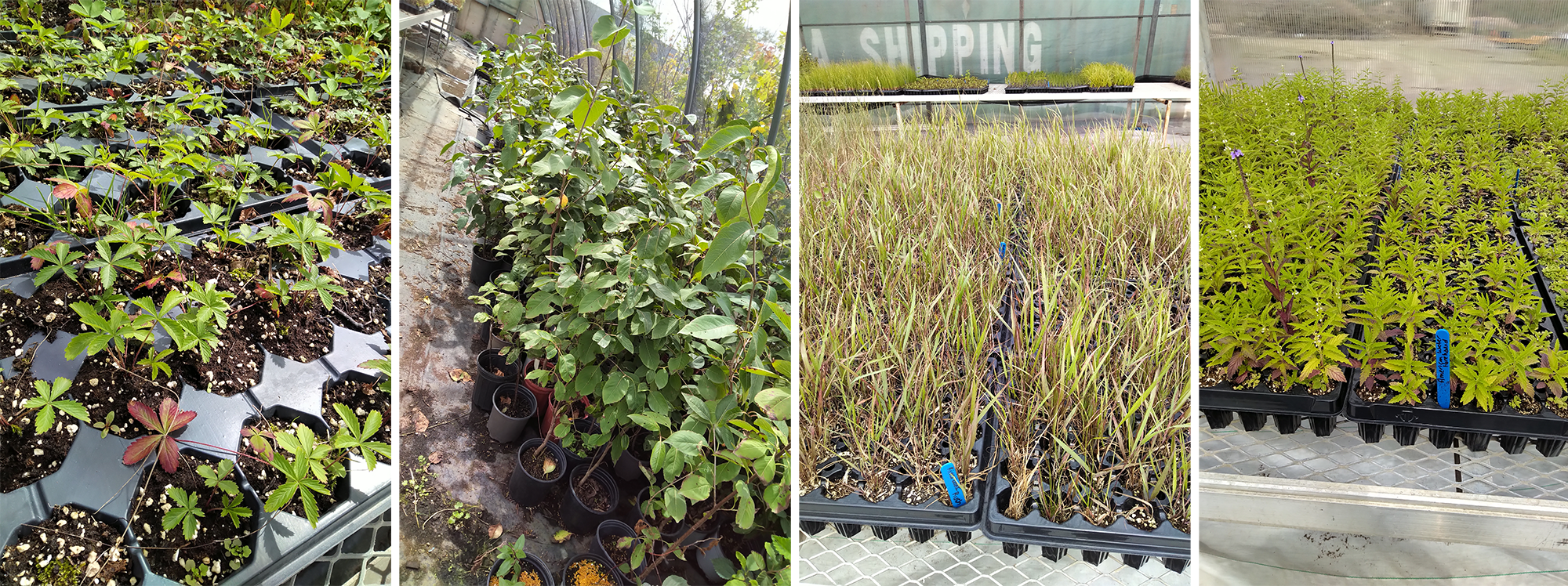
Plantings within the parks (or above the top of the river banks) are outside of the floodplain for the new river, so they’ll stay dry even during big storms. The plantings in the parks are designed to be more tolerant of urban conditions. Compacted soils, high pedestrian traffic, and salt spray from roads are all challenging for some plants.
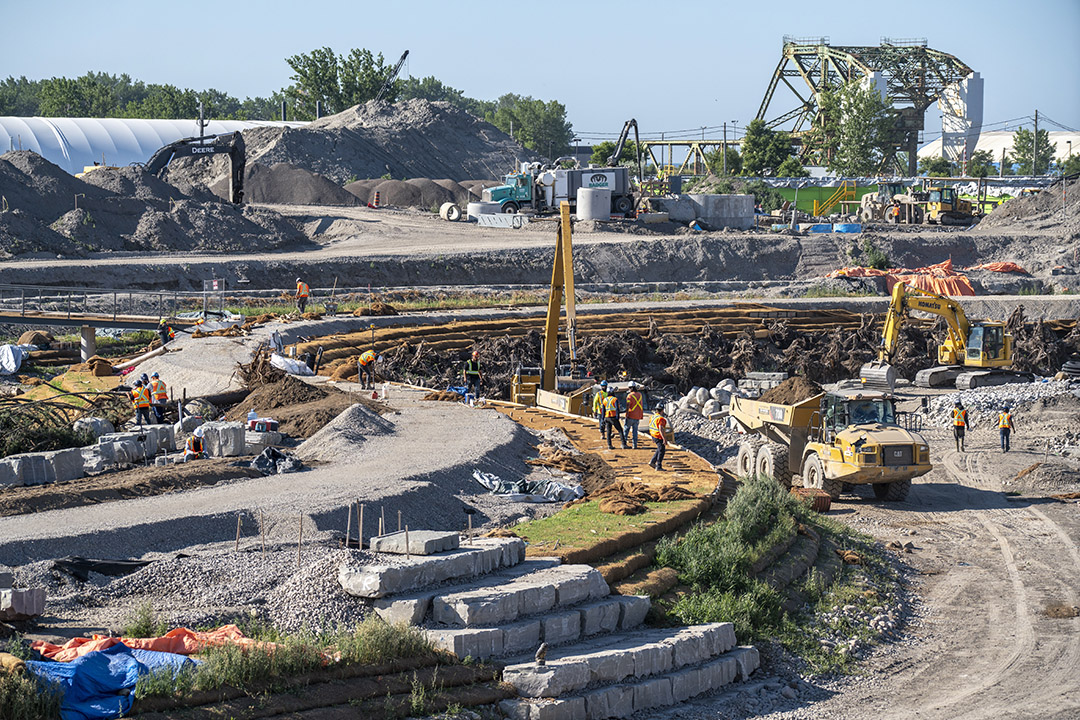
The plant palette in the areas outside of the floodplain includes species that are known to provide landscape and ornamental interest, quality habitats for wildlife , and to be non-invasive.
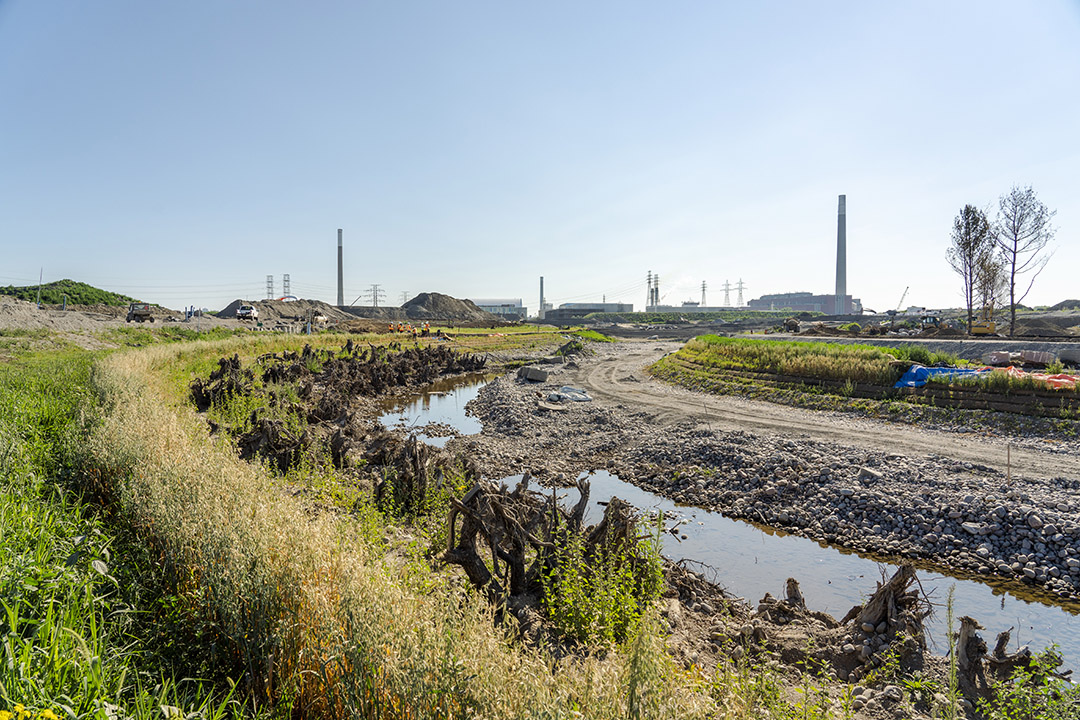
How do we plant so many plants?
By hand, mostly! Teams of four or five planters manage to plant approximately 5000 plants per day.

Each section of park will be planted on a schedule provided by landscape architects Michael Van Valkenburg and Associates (MVVA). The type of plant or tree determines the schedule for when to plant it. Most plants fall into either a spring or fall planting period. Each individual area within the project has a different timeline for planting. That’s because we have to finish other work first – like putting down soil for the plants to grow in.
Some plants were started from seed in early 2021! Once they grow into a big enough size, they are transplanted into the Port Lands.
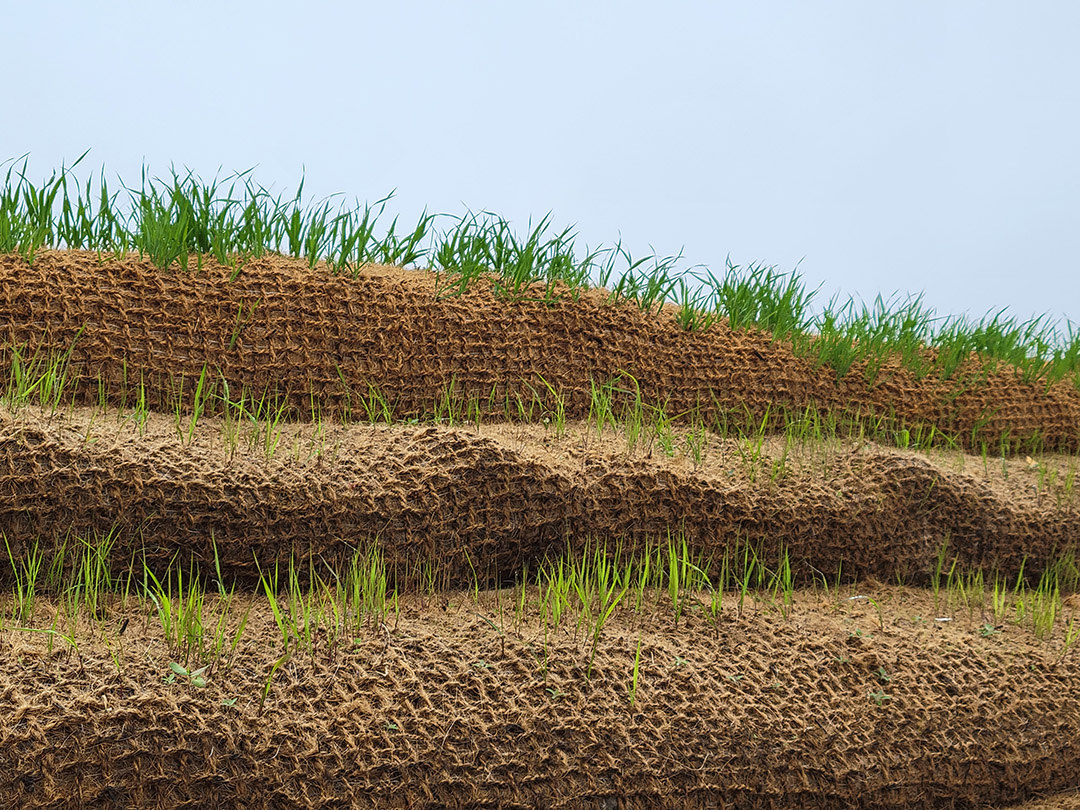
What will be planted first?
The first section we planted is the sedge meadow, on the north side of the river.
The sedge meadow is full of plants called sedges! Sedges are similar to grasses except that they are not hollow and their stems have edges. They also belong to a different biological family.

Typically, the larger trees and shrubs are planted first. There is so much variety in the sizes of trees and shrubs that each location has a different schedule. For example, some trees we’ll plant in the parks are already relatively mature, with trunks 60-90mm wide. These are usually planted before other plants. Some trees are still saplings and can be more easily transplanted with other plants nearby.
Capturing the Indigenous Roots
The Port Lands are part of the traditional territory of the Mississaugas of the Credit First Nation (MCFN). Toronto is covered by Treaty 13 with MCFN. MVVA, the principle landscape architects, lead the design of the parks. They worked with MinoKamik, a collective of Indigenous placemaking specialists, to choose the plants. Together, they selected plants that will help re-engage the land to the water. Some of the plants also have medicinal and cultural significance for Indigenous communities. More about engagement with Indigenous communities.
Helping seedlings thrive
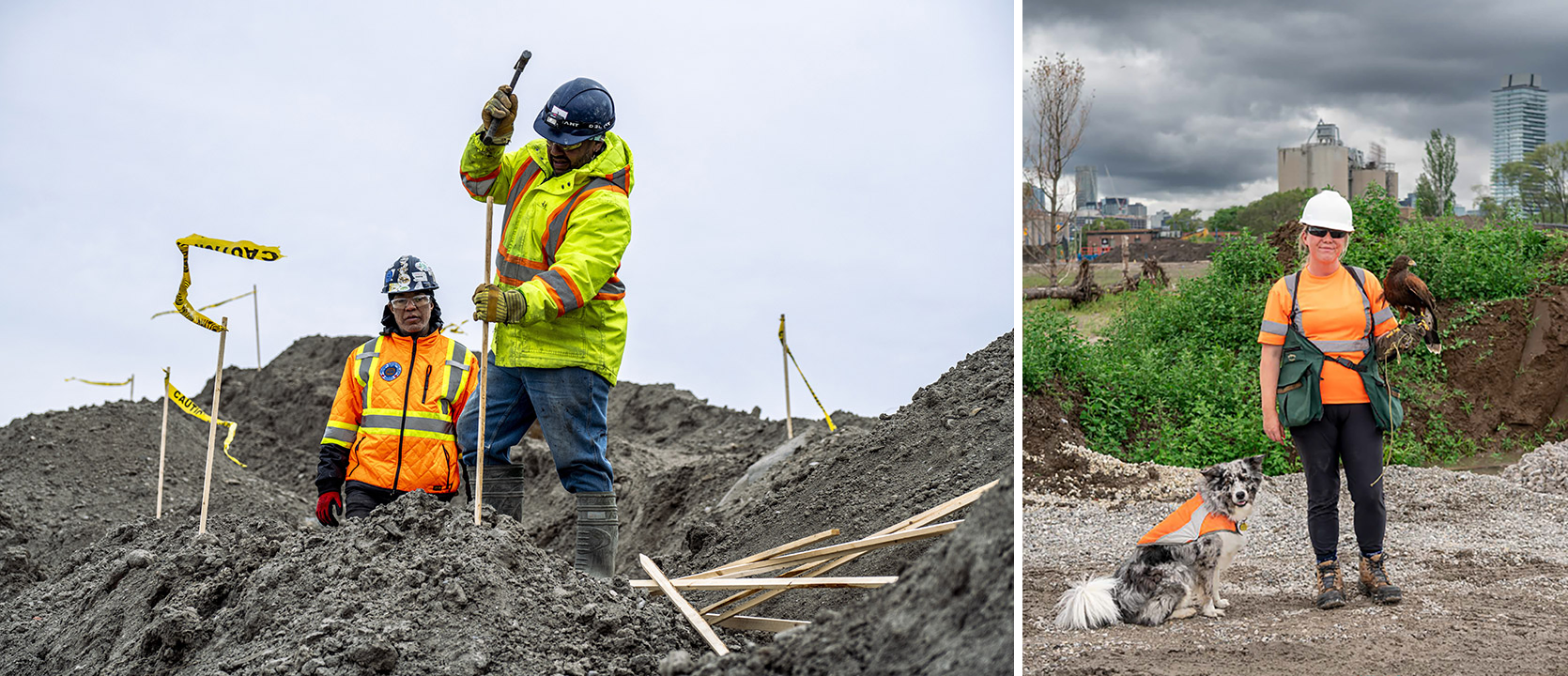
To ensure seedlings grow into mature plants, we do our best to set them up for success. Certain plants can only be planted during their dormancy period, so they are planted at very specific times of year. Other plants are grown to a certain size in a nursery before being planted in the ground. Then we protect the young plants from animals that would eat them by making the area unappealing. Once the plants are more established, we’ll stop trying to scare away the wildlife.
See more photos by our photographers Vid Ingelevics and Ryan Walker.